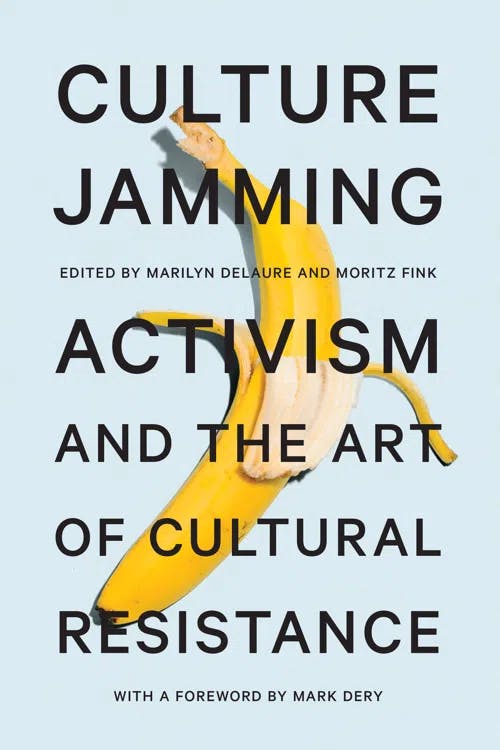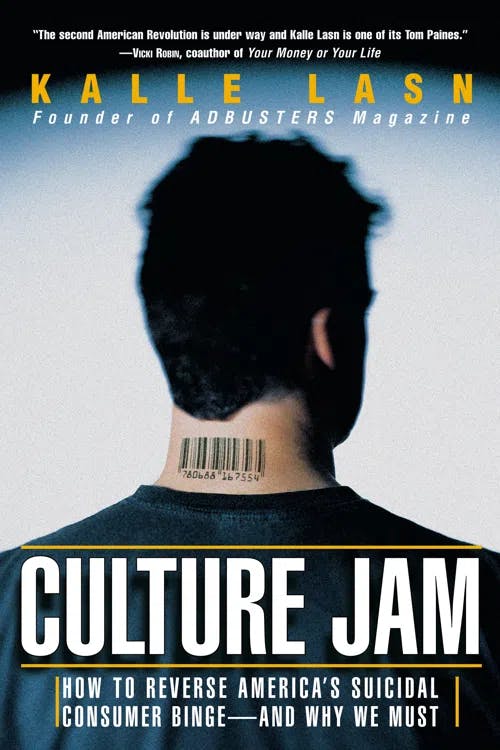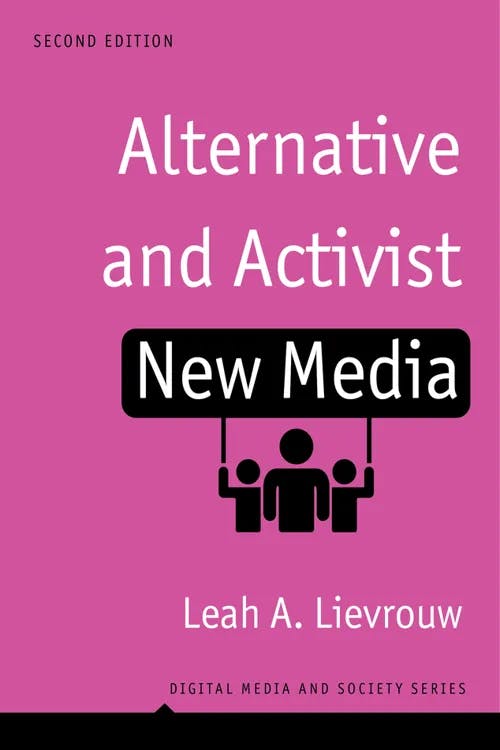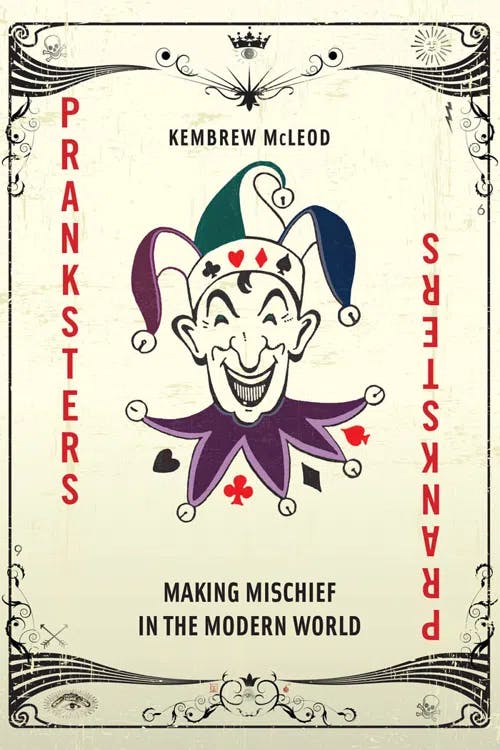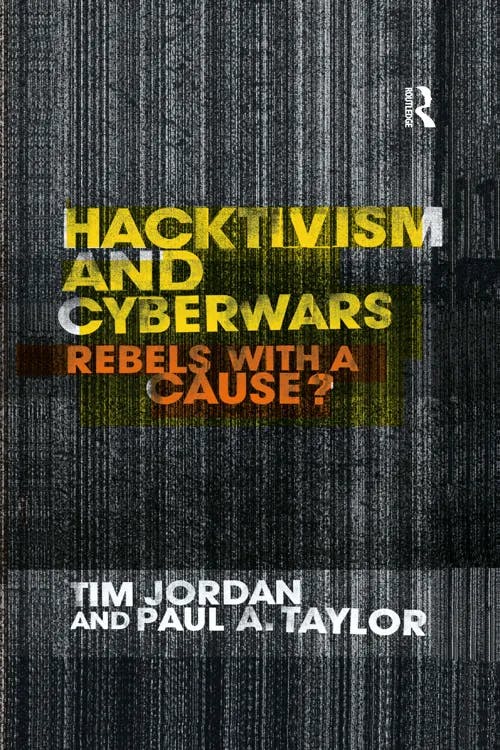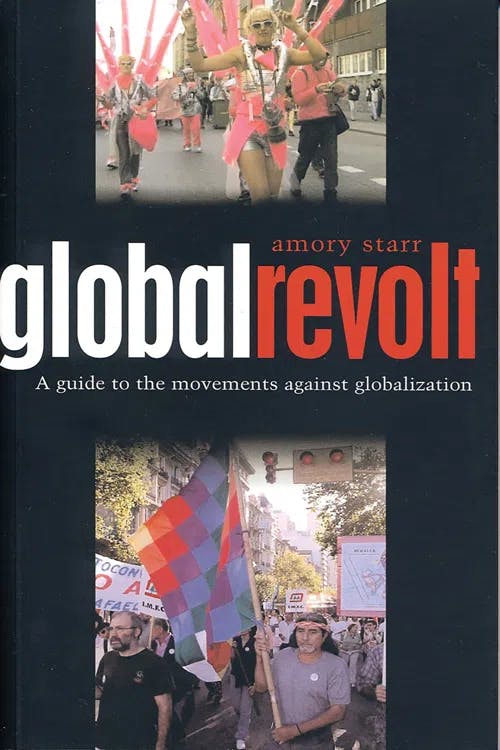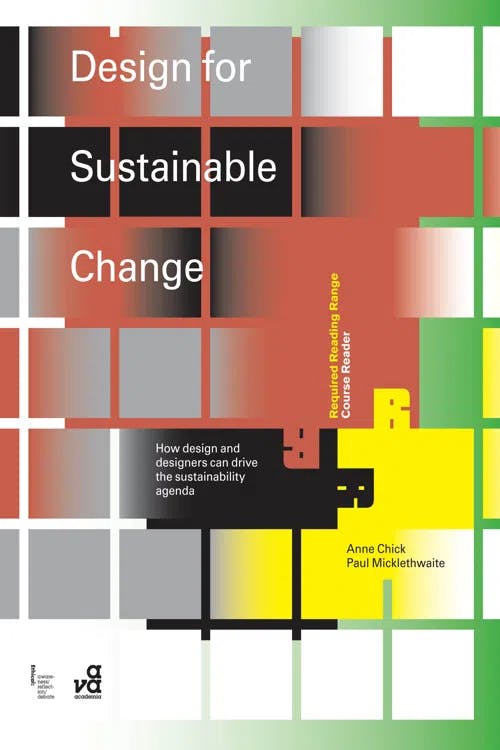What is Culture Jamming?
PhD, English Literature (Lancaster University)
Date Published: 22.08.2023,
Last Updated: 17.01.2024
Share this article
Definition and origins
Advertising is all around us. Numerous anti-capitalist activist groups have challenged the consistent presence of corporations in our lives, arguing that non-participation under capitalism is near impossible. A way of drawing attention to the seemingly invasive presence of consumerism in our modern lives is through culture jamming, a type of guerilla communication.
Culture jamming is a form of activism that aims to challenge the messaging and dominating influence of mass media and other cultural institutions on the public, often through subverting, satirizing or parodying the techniques of such institutions. Culture jammers deploy a range of tactics, including the creation of hoax news stories and fake advertisements, in order to promote their social cause.
Perhaps the most influential essay on culture jamming is Mark Dery’s “Culture Jamming: Hacking, Slashing, and Sniping in the Empire of Signs,” initially released as a pamphlet in 1993 in the Open Magazine Pamphlet series. In this essay, Dery explains,
“Jamming” is CB slang for the illegal practice of interrupting radio broadcasts or conversations between fellow hams with lip farts, obscenities, and other equally jejune hijinks. Culture jamming, by contrast, is directed against an ever more intrusive, instrumental technoculture whose operant mode is the manufacture of consent through the manipulation of symbols. [...] Intruding on the intruders, [culture jammers] invest ads, newscasts, and other media artifacts with subversive meanings; simultaneously, they decrypt them, rendering their seductions impotent. (Dery, in Culture Jamming, 2017)
Edited by Marilyn DeLaure and Moritz Fink
“Jamming” is CB slang for the illegal practice of interrupting radio broadcasts or conversations between fellow hams with lip farts, obscenities, and other equally jejune hijinks. Culture jamming, by contrast, is directed against an ever more intrusive, instrumental technoculture whose operant mode is the manufacture of consent through the manipulation of symbols. [...] Intruding on the intruders, [culture jammers] invest ads, newscasts, and other media artifacts with subversive meanings; simultaneously, they decrypt them, rendering their seductions impotent. (Dery, in Culture Jamming, 2017)
The term was coined by the American band Negativland. On the nature of media, advertising and the role of music in that landscape, one band member remarked:
As awareness of how the media environment we occupy affects and directs our inner life grows, some resist. . . . The skillfully reworked billboard . . . directs the public viewer to a consideration of the original corporate strategy. The studio for the cultural jammer is the world at large. (Quoted by Dery, 2017)
As such, culture jamming incorporates a range of subcultural practices from computer hacking to public performances.
Adbusters is one anti-consumerist organization which embraces culture jamming tactics, and its founder Kalle Lasn outlines the aims of culture jammers such as himself:
We’re a loose global network of media activists who see ourselves as the advance shock troops of the most significant social movement of the next twenty years. Our aim is to topple existing power structures and forge major adjustments to the way we will live in the twenty-first century. [...] [Culture jamming] will change the way information flows, the way institutions wield power, the way TV stations are run, the way the food, fashion, automobile, sports, music and culture industries set their agendas. Above all, it will change the way we interact with the mass media and the way in which meaning is produced in our society. (2013)
Kalle Lasn
We’re a loose global network of media activists who see ourselves as the advance shock troops of the most significant social movement of the next twenty years. Our aim is to topple existing power structures and forge major adjustments to the way we will live in the twenty-first century. [...] [Culture jamming] will change the way information flows, the way institutions wield power, the way TV stations are run, the way the food, fashion, automobile, sports, music and culture industries set their agendas. Above all, it will change the way we interact with the mass media and the way in which meaning is produced in our society. (2013)
Major influences
Culture jamming derives inspiration from the work of situationists such as Guy Debord. Much like the fake advertisements created by culture jammers, the situationists engaged in a practice known as “détournement,” which involved modifying pre-existing images (such as brand slogans or famous paintings) to give them a renewed meaning. Détourned images were designed to unveil the hidden message behind these images, or otherwise criticize mass production and the art industry in general.
Asger Jorn’s work is a prime example of this. Jorn would take oil paintings he found at flea markets and paint over them as a political statement; either critiquing or mocking the art world or the politics and ideologies that the image represented. An example of his work includes Ainsi s’Ensor (Out of this World – after Ensor), 1962) in which he transforms the face of a hanged man into a clown face.
To learn more about the situationists, see our study guide “What is Situationist Theory?”
Another major influence on culture jamming is postmodern philosopher Jean Baudrillard, specifically his writing on the simulacrum and hyperreality. Put simply, the simulacrum is a type of simulation in which reality and representation become indistinguishable from one another. In Simulacra and Simulations (1981), Baudrillard points to Disneyland as a core example of this:
Disneyland is presented as imaginary in order to make us believe that the rest is real, when in fact Los Angeles and the America surrounding it are no longer real, but of the order of the hyperreal and of simulation. (Baudrillard, in The New Social Theory Reader, 2020)
Edited by Steven Seidman and Jeffrey C. Alexander
Disneyland is presented as imaginary in order to make us believe that the rest is real, when in fact Los Angeles and the America surrounding it are no longer real, but of the order of the hyperreal and of simulation. (Baudrillard, in The New Social Theory Reader, 2020)
Dery concurs with Baudrillard and argues that,
Reality isn’t what it used to be. In America, factory capitalism has been superseded by an information economy characterized by the reduction of labor to the manipulation, on computers, of symbols that stand in for the manufacturing process. The engines of industrial production have slowed, yielding to a phantasmagoric capitalism that produces intangible commodities—Hollywood blockbusters, television sit-coms, catchphrases, jingles, buzzwords, images, one-minute megatrends, financial transactions flickering through fiber-optic bundles. (2017)
Culture jamming is thus a response to the media and corporate manipulation of the public; a way of using these clichéd and mass-produced images to challenge their authority and undermine their messaging.
What makes an impactful culture jam?
While culture jamming can take numerous forms and mediums, and assert different political messages, they are united by some shared characteristics. In Alternative and Activist New Media (2023), Leah A. Lievrouw highlights that the main traits found in culture jamming, and what makes it fun and engaging, are:
- Irony
- Subcultural literacy
- Small scale
- Interventionism
(2023)
Lievrouw further adds several unifying features of culture jams: the creation of alternative spaces, perishability, aesthetic sophistication, and insider participation.
Creating alternative spaces
Culture jamming allows for the re-envisioning of cultural space. Public space can be transformed into an event or performance, for example.
Perishability
Culture jams are typically non-permanent, often appearing as pop-up stalls, and temporary art exhibits. Similarly, they may respond to short-lived events such as a performance on a surveillance camera. Though it is worth noting that the digitization of CCTV footage has made this form more permanent than perhaps initially intended. The transient nature of the culture jam is clearly indebted to the graffiti art created by the situationists.
Aesthetic sophistication
Lievrouw argues that,
Culture jamming is certainly the most aesthetically sophisticated of the genres. The rupture and derangement of ideological spectacles, fragmentation, mimicry, juxtaposition, bricolage, appropriation, détournement, and dérive are all in its toolbox. (2023)
Leah A. Lievrouw
Culture jamming is certainly the most aesthetically sophisticated of the genres. The rupture and derangement of ideological spectacles, fragmentation, mimicry, juxtaposition, bricolage, appropriation, détournement, and dérive are all in its toolbox. (2023)
In other words, culture jams often combine a variety of different mediums and tools to portray their message. They are highly visual protests which may combine newspaper clippings, images of high art, comic strips, and so on.
Insider participation
Culture jamming allows for insider participation and has “the ability to reach just those groups who are most in tune with, and prepared to act on, its oppositional, subversive purposes” (2023). Lievrouw adds that algorithmic technologies tend to be a better form of communication and dissemination than traditional mass media channels. Another popular method of disseminating culture jams is through “subvertising.”
Subvertising and brandalism
Subvertising, also referred to as “brandalism,” describes the practice of editing advertisements or using a company’s logo style to critique corporations. The most common method of subvertising is through billboards.
One of the first subvertising groups was The Billboard Liberation Front (BLF), created in 1977 in San Francisco. The BLF vandalized existing corporate billboards to undermine or challenge their messaging (see Figure 1).

Fig. 1. "Billboard Liberation Front's take on AT&T Case" (Photographed by Danny O'Brien, 2008, Flickr)
While the BLF has since disbanded, other subvertising organizations are still in operation, such as Subvertisers International and Brandalism. Members of Subvertisers International recently targeted BMW and Toyota through fake billboard advertisements which criticized their environmental impact, with slogans such as “Toyota Land Crusher Dominate Life” and “Let’s Ruin Everything” (mocking Toyota’s famous phrase “Let’s Go Places”). The “Let’s Ruin Everything” billboard depicts a car surrounded by cartoonish illustrations of environmental disasters.
One of the anonymous activists involved in this protest had this to say:
You’re subverting advertising in an act of jujitsu, using your enemy’s weight against them. You’re using the brand recognition of their logos that they’ve carefully crafted using millions of dollars and dozens of advertising agencies over many decades, [sending] all of that back at them by attaching a different meaning to that brand. It’s fun. It’s a bit edgy. It can make you smile, bringing a bit of light relief to a dire situation. (Quoted in Charlie Hertzog Young, Spinning Out, 2023)
Charlie Hertzog Young
You’re subverting advertising in an act of jujitsu, using your enemy’s weight against them. You’re using the brand recognition of their logos that they’ve carefully crafted using millions of dollars and dozens of advertising agencies over many decades, [sending] all of that back at them by attaching a different meaning to that brand. It’s fun. It’s a bit edgy. It can make you smile, bringing a bit of light relief to a dire situation. (Quoted in Charlie Hertzog Young, Spinning Out, 2023)
Previous billboard protests include the 2022 campaign against the aviation industry. This protest was carried out by members of both groups who drew attention to the high carbon footprint of airlines that had previously boasted of their sustainability achievements. Billboards included a KLM-branded plane flying over wildfires, with the caption “Fly Responsibly? Creating a Less Sustainable Future” featured alongside a reference to the greenwashing lawsuit against KLM. Another billboard parodied Lufthansa’s advertisements, replacing their slogan “Say yes to the world” with “Say yes to the end of the world.”
Buy Nothing Day
Subvertising can go beyond billboards and require public participation, as is the case with Buy Nothing Day. Buy Nothing Day parodies Black Friday, the day after Thanksgiving where many stores offer discounted prices and mark the beginning of the Christmas shopping period. Black Friday has been widely condemned for its normalization of overconsumption, as well as the violence large-scale promotions have caused.
Buy Nothing Day started in 1992 and is held on the same day as Black Friday. The premise is simple: do not buy anything for 24 hours. The website for Buy Nothing Day mimics traditional advertising campaigns, and even has mock-up items such as “packaging detox serum.” The site also has free downloadable posters which utilize big brands to promote anti-consumption; examples of this include “Caffe Zero” and Amazon's classic “A to Z” logo inverted to look like a sad face.
Performance-based culture jams
Culture jams, however, do not only take the form of artistic illustrations or subvertising. Culture jamming experiments with an array of different forms and often contains a performative element. Key examples of this are media hoaxing, surveillance-based performances, and flash mobs.
Media hoaxing
Media hoaxing refers to the practice of deceiving journalists into researching or covering a deception. Such hoaxes are often very elaborate. A prominent example of a media hoaxer is Joey Skaggs. One of Skaggs’ many hoaxes includes “Dog Meat Soup” in which Skaggs, under the guise of the fictional Kim Yung Soo, sent 1,500 letters to animal shelters offering to buy dogs to be made into soup. This caught the attention of the media (many of whom claimed to have spoken to the fictitious company) and resulted in the police searching Skaggs’ building. The purpose of this hoax was to encourage the public and the media to examine their racist biases. As Kembrew McLeod writes,
Skaggs emphasizes that the most valuable work comes after the prank—by educating audiences about mass media’s role in spreading misinformation. That can be hard, because most news organizations don’t like to report on their own follies. (2014)
Kembrew McLeod
Skaggs emphasizes that the most valuable work comes after the prank—by educating audiences about mass media’s role in spreading misinformation. That can be hard, because most news organizations don’t like to report on their own follies. (2014)
Other hoax-based culture jams include those enacted by the Yes Men. In one instance, the group impersonated World Trade Organization representatives and proposed the reintroduction of slavery into the US.
In his chapter “The Faker as Producer,” Marco Deseriis writes that media pranksters’
ethical commitment lies in unveiling how media often fail to fact-check and apply the very standards that should make them trustable.
Sometimes, failure to implement these standards can seriously damage news organizations, especially in the case of institutions whose reputation derives from their reliability. (Deseriis, in Culture Jamming, 2017)
Deseriis further acknowledges, however, that many media outlets embrace this due to the free publicity, as part of a combination of entertainment and news media.
Hoaxing still continues today in a variety of forms. The talk show Last Week Tonight with John Oliver (2014–), often uses hoaxes to illustrate the social and political issues Oliver discusses on the show. Unlike the Yes Men or Skaggs, however, Oliver is not attempting to show the gullibility of a particular institution; instead, he often carries out such hoaxes to demonstrate flaws in bureaucratic procedures. The season 2 episode “Church,” for example, concludes with Oliver creating his own legally recognized church, “Our Lady of Perpetual Exemption,” to draw attention to how easy it is for fraudulent churches to be set up and take donations from the public. Oliver’s church received thousands (as well as plenty of joke donations), which were later donated to Doctors Without Borders.
Surveillance Camera Players
Anti-CCTV projects are another type of culture jamming performance. These projects involve dancing or acting whilst in front of CCTV cameras, whether that is on the street, outside of ATMs, or within shopping centers. While this can be performed individually, there are groups dedicated to this type of jamming; the most well-established group, in terms of acting, are the Surveillance Camera Players (SCP). The SCP was founded by Bill Brown and Susan Hull in New York in 1996, and the Players would stage numerous plays including Samuel Beckett’s Waiting for Godot (1953) and, pointedly, George Orwell’s 1984 (1948). The SCP emerged, partly, as a result of Michael Carter’s manifesto “Guerilla Programming of Video Surveillance Equipment” (1995). The manifesto proposes that a way of challenging the surveillance state is for “a group of individuals [to] create a scenario and act it out using surveillance cameras as if they were their own, as if they were producing their own program” (Carter, 1995). Members of the SCP used this tactic to protest violations of their protected rights through CCTV, which they viewed as invasive. Moreover, it was felt that the security guards watching the footage would be given something entertaining, and real, to watch.
The Players did not stop at plays and were creative in their resistance to CCTV in the city. As Lievrouw writes,
The Players also posted maps of “walking tours” in New York and other cities that showed where cameras were located, so that strollers could avoid them, and stickered cameras with “helpful” labels reading WE ARE WATCHING YOU. (2023)
In 1996, this form of culture jam became a more unified work of art in Denis Beaubois’ video In the Event of Amnesia the City Will Recall, which was screened at DEAF07 (Dutch Electronic Art Festival, 2007). Beaubois selected twelve sites around the city in which surveillance cameras were in operation. Beaubois visited each of these sites for three days, engaging with the camera, without prior permission and without announcing his arrival. The artist held up written signs, trying to establish two-way communication in a system designed to be one-way. The video questions the role of anonymous CCTV and the relationship between the viewer and subject.
Flash mobs
Another form of disruptive culture jamming performance is the flash mob, which became popular in the early 2000s. A flash mob is a group of people who seem to suddenly appear in a public place, perform a dance or act out a scene, and then disperse. This is often used for comedic purposes or artistic expression.
As Rebecca Walker explains in “Turning Tricks,”
A unique power relationship operates between the flash mob and its audience, consisting of both those people who work at the site of the mob and any other individuals at the site where the mob occurs. The mob’s presence frustrates the expectations of this audience, who then must choose among acquiescing to the presence of the mob by simply watching it unfold (or joining in), refusing to acknowledge the mob’s presence by continuing with their regular routine, or actively fighting back. I believe that in the case of the political flash mob, there are two target audiences. (Walker, in Culture Jamming, 2017)
Walker goes on,
The flash mob, in essence, taunts the unseen tower guard in the panoptic prison, giving him much more to watch than he bargained for—or even, one might argue, checking to see if he’s on duty at all. (2017)
Ultimately, Walker concludes that the flash mob exposes and questions “the unspoken rules that govern our daily behavior” and reminds us of the power of collective bodies.
The limitations of culture jamming
There are several critiques of culture jamming — from their insufficiency in providing alternative social visions, to their lack of widespread impact, and even to the possibility of culture jams being co-opted themselves.
Lack of alternatives
In “Beyond the Culture Jam”, Valerie Scatamburlo-D’Annibale argues that,
Culture jamming, forms of meme warfare, and textual resistance cannot topple existing power structures; nor can they lead us to imagine alternative forms of social and economic organization beyond capital. [...] [C]ulture jammers need to remind themselves that the Situationists from whom they claim inspiration were interested in replacing the capitalist mode of production with socialism and using art as a weapon of class war to promote action to that end. (Scatamburlo-D’Annibale, in Critical Pedagogies of Consumption, 2010)
Edited by Jennifer A. Sandlin and Peter McLaren
Culture jamming, forms of meme warfare, and textual resistance cannot topple existing power structures; nor can they lead us to imagine alternative forms of social and economic organization beyond capital. [...] [C]ulture jammers need to remind themselves that the Situationists from whom they claim inspiration were interested in replacing the capitalist mode of production with socialism and using art as a weapon of class war to promote action to that end. (Scatamburlo-D’Annibale, in Critical Pedagogies of Consumption, 2010)
While the situationists were working towards a vision of the future, culture jamming has yet to present an alternative world in which necessary production can continue in the absence of labor exploitation and overconsumption.
Small-scale impact
A further issue with culture jamming is its inability to move beyond the small, underground circles in which it operates. As Jason M. Adams explains, subvertisements by the likes of Adbusters rarely go viral (Occupy Time, 2013). Lievrouw echoes this, stating that
Despite asserting a grandiose manifesto and a ubiquitous, even omniscient, image online, Anonymous [a hacktivist group] comprises a fairly small number of regular participants around the world. [Many projects] are similarly small-scale, low-budget efforts with limited audience reach, even if they may attract strong online “word of mouth” later. (2023)
Recuperation
One of the main issues with culture jamming is that it is easily co-opted and sold back to the public as a newly commodified item. This is what is known as “recuperation.” As Tim Jordan and Paul Taylor write,
Once culture jammers enter the empire of signs and begin their work re-manipulating the semiotic viruses transmitted by corporations, they risk being trapped there. (2004)
Tim Jordan and Paul A. Taylor
Once culture jammers enter the empire of signs and begin their work re-manipulating the semiotic viruses transmitted by corporations, they risk being trapped there. (2004)
Mike Sharman’s Brandalism, for example, co-opts the term “brandalism” in order to sell his marketing strategy: helping brands go viral by “vandalizing” their “perceived public persona” (2022).
A further example of recuperation is Banksy’s Love is in the Bin. In 2018, Banksy shocked the art world by shredding his work, Girl with Balloon, after it had been sold for £1 million at Sotheby’s, London. After the piece was half-shredded, it then sold for £18,582,000. It is questionable, however, whether Banksy was truly trying to make a political statement here, or if he knew the work of art would sell more now it was part of a historic event. Banksy still maintains, however, that the auto-shred device was intended to destroy the entire artwork, but a malfunction rendered it half-shredded and thus still a viable, desirable commodity.
In “Stop signs: an introduction to culture jamming,” Graham Meikle writes,
There appears, for example, to be no anti-commercial gesture which cannot be commercialised [...]. Moreover, advertisers now commonly launch knowing guerilla advertisement campaigns that pre-empt subversion, that neutralise satire by satirising themselves first. A further problem is that jamming trades in precisely the same kind of rebellious individualism that is the currency of advertising pitches. (Meikle, in The Alternative Media Handbook, 2007)
Edited by Kate Coyer, Tony Dowmunt, and Alan Fountain
There appears, for example, to be no anti-commercial gesture which cannot be commercialised [...]. Moreover, advertisers now commonly launch knowing guerilla advertisement campaigns that pre-empt subversion, that neutralise satire by satirising themselves first. A further problem is that jamming trades in precisely the same kind of rebellious individualism that is the currency of advertising pitches. (Meikle, in The Alternative Media Handbook, 2007)
In some cases, culture jammers have embraced this recuperation, undermining their anti-capitalist stance. Adbusters has been criticized in recent years for seeking to profit from its anti-consumerist platform. In Global Revolt, Amory Starr states
Adbusters promptly commodified itself, selling the magazine at supermarkets, holiday gift sets of adbust postcards, and their own sneakers designed to ‘reclaim culture’ and ‘reassert consumer sovereignty over capitalism’ through a ‘worldwide consumer cooperative’. (2013)
Amory Starr
Adbusters promptly commodified itself, selling the magazine at supermarkets, holiday gift sets of adbust postcards, and their own sneakers designed to ‘reclaim culture’ and ‘reassert consumer sovereignty over capitalism’ through a ‘worldwide consumer cooperative’. (2013)
In Design for Sustainable Change, Anne Chick and Paul Micklethwaite point out that Adbusters is unlikely an isolated case:
The romantic image of the culture jammer is of the free-ranging activist, fighting the cultural dominance of the language of advertising. Yet the reality is that most producers of culture jamming, particularly as commodified in the magazine Adbusters, are likely to have day jobs in the advertising industry. Their success in the dominant commercially led communication system allows them to carry out their visual deconstructions of that same system by night. This form of culture jamming represents a mode of design activism that is complicit in the system it apparently seeks to subvert. Does it achieve anything, or is it self-indulgent and ultimately ineffectual? (2017)
Anne Chick and Paul Micklethwaite
The romantic image of the culture jammer is of the free-ranging activist, fighting the cultural dominance of the language of advertising. Yet the reality is that most producers of culture jamming, particularly as commodified in the magazine Adbusters, are likely to have day jobs in the advertising industry. Their success in the dominant commercially led communication system allows them to carry out their visual deconstructions of that same system by night. This form of culture jamming represents a mode of design activism that is complicit in the system it apparently seeks to subvert. Does it achieve anything, or is it self-indulgent and ultimately ineffectual? (2017)
Boxing with shadows: culture jamming today
In the foreword to Culture Jamming, Mark Dery revisits his original influential essay, commenting on whether the original purpose and methods of culture jamming are still relevant today. Dery identifies a major difference between the original culture jammers in the 90s and the public today: who controls and creates the media. While mass media is still primarily controlled by large corporations, Dery points out that due to the widespread availability of Wi-Fi and smartphones, anyone can be a journalist. In this sense, Dery argues,
Whether we’re Like-ing LOLcat photos or lifting our voices in righteous rage about the social injustice of the day, we’re working as unpaid content providers for Lords of the New Economy like Mark Zuckerberg, who are only too happy to mine our personal data and sell it to advertisers. (2017)
Dery concludes that questions of political engagement are still relevant in an age when the web has “popularized culture as a conversation, not a monologue” (2017). Culture jamming resonates with our new reciprocal relationship with the web as it encourages us to investigate and disseminate news that the mass media does not cover. The ease of making video content or memes enables the public to engage in culture jamming in a way that transcends its small, underground origins; allowing social critiques to reach a wider audience than ever before.
Further reading on Perlego
Underminers: A Guide to Subverting The Machine (2013) by Keith Farnish
Activism!: Direct Action, Hacktivism and the Future of Society (2004) by Tim Jordan
Future Active: Media Activism and the Internet (2014) by Graham Meikle
Your Ad Here: The Cool Sell of Guerrilla Marketing (2013) by Michael Serazio
What is culture jamming in simple terms?
What is an example of culture jamming?
Who are some prominent culture-jamming artists and organizations?
Bibliography
Adams, J. M. (2013) Occupy Time: Technoculture, Immediacy, and Resistance after Occupy Wall Street. Palgrave Pivot. Available at: https://www.perlego.com/book/3485079/occupy-time-technoculture-immediacy-and-resistance-after-occupy-wall-street-pdf
Carter, M. (1995) “Guerilla Programming of Video Surveillance Equipment”. Available at: https://www.notbored.org/gpvse.html
Chick, A., and Micklethwaite, P. (2017) Design for Sustainable Change. Bloomsbury Visual Arts. Available at: https://www.perlego.com/book/499891/design-for-sustainable-change-pdf
Deseriis, M. (2017) “The Faker as Producer: The Politics of Fabrication and the Three Orders of the Fake,” in Delaure, M., and Fink., M. (eds.) Culture Jamming: Activism and the Art of Cultural Resistance. NYU Press. Available at: https://www.perlego.com/book/719706/culture-jamming-activism-and-the-art-of-cultural-resistance-pdf
Dery, M. (2017) “Culture Jamming: Hacking, Slashing, and Sniping in the Empire of Signs,” in Delaure, M., and Fink., M. (eds.) Culture Jamming: Activism and the Art of Cultural Resistance. NYU Press. Available at: https://www.perlego.com/book/719706/culture-jamming-activism-and-the-art-of-cultural-resistance-pdf
Dery, M. (2017) “Foreword,” in Delaure, M., and Fink., M. (eds.) Culture Jamming: Activism and the Art of Cultural Resistance. NYU Press. Available at: https://www.perlego.com/book/719706/culture-jamming-activism-and-the-art-of-cultural-resistance-pdf
Jordan, T., and Taylor, P. (2004) Hacktivism and Cyberwars: Rebels with a Cause? Routledge. Available at: https://www.perlego.com/book/1615603/hacktivism-and-cyberwars-rebels-with-a-cause-pdf
Lasn, K. (2013) Culture Jam. William Morrow Paperbacks. Available at: https://www.perlego.com/book/595801/culture-jam-pdf
Lievrouw, L.A. (2023) Alternative and Activist New Media. Polity. Available at:https://www.perlego.com/book/3906132/alternative-and-activist-new-media-digital-media-and-society-pdf
McLeod, K. (2014) Pranksters: Making Mischief in the Modern World. NYU Press. Available at: https://www.perlego.com/book/720487/pranksters-making-mischief-in-the-modern-world-pdf
Meikle, G. (2007) “Stop signs: an introduction to culture jamming,” in Coyer, C., Dowmunt, T., and Fountain, A. (eds.) The Alternative Media Handbook. Routledge. Available at: https://www.perlego.com/book/1599931/the-alternative-media-handbook-pdf
Rhodes, S. (2010) McDonald's - I'm sick of it Billboard Liberation Front 2 [Photograph]. Available at: https://www.flickr.com/photos/ari/4682216317
Scatamburlo-D’Annibale, V. (2010) “Beyond the Culture Jam,” in Sandlin, J. A., and McLaren, P. (eds.) Critical Pedagogies of Consumption: Living and Learning in the Shadow of the “Shopocalypse.” Routledge. Available at: https://www.perlego.com/book/1608525/critical-pedagogies-of-consumption-living-and-learning-in-the-shadow-of-the-shopocalypse-pdf
Sharman, M. (2002) Brandalism: Building brands by vandalising the status quo. Tracey McDonald Publishers. Available at: https://www.perlego.com/book/3278217/brandalism-building-brands-by-vandalising-the-status-quo-pdf
Starr, A. (2013) Global Revolt: A Guide to the Movements against Globalization. Zed Books. Available at: https://www.perlego.com/book/2003448/global-revolt-a-guide-to-the-movements-against-globalization-pdf
Walker, R. (2017) “Turning Tricks: Culture Jamming and the Flash Mob,” in Delaure, M., and Fink., M. (eds.) Culture Jamming: Activism and the Art of Cultural Resistance. NYU Press. Available at: https://www.perlego.com/book/719706/culture-jamming-activism-and-the-art-of-cultural-resistance-pdf
Filmography
“Church” (2015) Last Week Tonight with John Oliver, Season 2, episode 25. Available on Amazon Prime.
Photography
"Billboard Liberation Front's take on AT&T Case" (2008) Photographed by Danny O'Brien
PhD, English Literature (Lancaster University)
Sophie Raine has a PhD from Lancaster University. Her work focuses on penny dreadfuls and urban spaces. Her previous publications have been featured in VPFA (2019; 2022) and the Palgrave Handbook for Steam Age Gothic (2021) and her co-edited collection Penny Dreadfuls and the Gothic was released in 2023 with University of Wales Press.

